Coconut
Rhinoceros Beetle
Symptoms of damage



Identification of pest
Egg: Oval creamy white egg in manure pits or decaying vegetable matter at a depth of 5 to 15 cm. Egg periods is 8 to 18 days. Female laid 140 to 150 eggs.
Grub: Grub is stout, sluggish, white "C"-shaped with pale brown head and found at a depth of 5 to 30 cm.
Pupa: Grub pupates in earthen cells at a depth of 0.3 to 1 m
Adult: Adult beetle is stout, brownish black or black and has a long horn projecting dorsally from the head in male. Horn is short in female.


Management
(i) Cultural Method:
(ii) Mechanical Method:
(iii) Chemical Method:
(iv) Trap Method:
(v) Biological Method:
Red Palm Weevil
Symptoms of damage

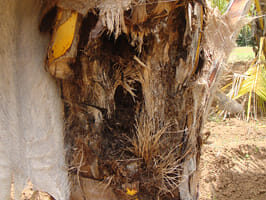
Identification of pest
Egg: Oval and creamy white in colour. Eggs laid in scooped out small cavities, wounds and other cut injuries on the trunk
Grub: Light yellowish grub without legs. Stout, fleshy and apodous with a conical body bulged in middle and tapering towards the end
Pupa: The full frown larva pupates inside the stem and fibrous cocoon made out of fibrous strands
Adult: Reddish brown weevil has six dark spots on thorax. Male has conspicuous long snout has a tuft of hairs.
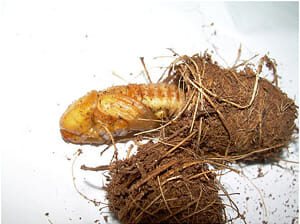
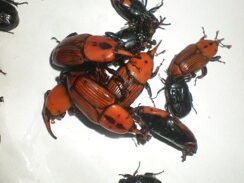
Management
Cultural Method:
Chemical Method:
Trap Method:
Coconut Eriophyid
Symptoms of damage
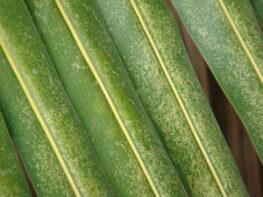


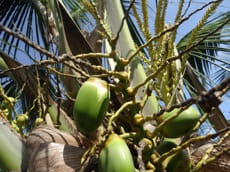
Identification of pest
Mite are usually found under the bracts of fertilized female flowers and do not infest the unfertilized flowers.
This mite is very minute in size measuring 200 – 250 micron in length and 36 – 52 micron in width with two pairs of legs.
Nymph and Adult is pale in colour with elongate body and worm like appearance. The life cycle of this mite, which consists of egg, two larval instars and an adult stage, is completed in 7 -10 days.
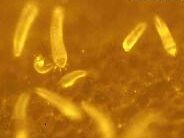
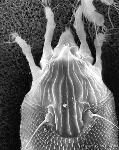
Management
Cultural Method:
Chemical Method:
Method of Application
Biological Method:
Leaf Eating Caterpillar/ Black Headed Caterpillar
Symptoms of damage
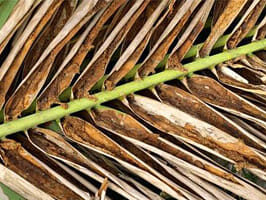

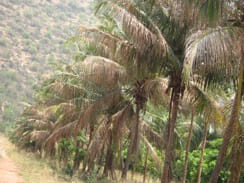
Identification of pest
Larva: Caterpillar is greenish brown with dark brown head and prothorax, and a reddish mesothorax. It has brown stripes on the body.
Pupa: It pupates inside the web itself in a thin silken cocoon
Adult Moth: Greyish white in colour
Female: with long antenna and three faint spots on the forewings
Male: with fringed hairs in hind wings in apical and anal margin.
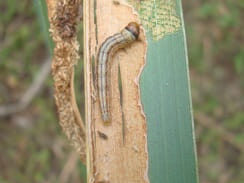

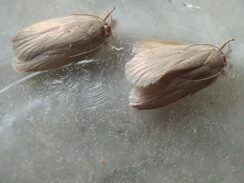
Management
Cultural Method:
Chemical Method:
Biological Method:
Slug Caterpillar
Symptoms of damage
Identification of pest
Egg: Flat shiny eggs on the under surface of leaves
Larva: Greenish body with white lines and four rows of spiny scoli tipped red or black, which cause irritation and pain.
Pupa: It pupates in a compact elliptical chocolate brown shell like cocoon, which is convex above and flat ventrally as stems. Cocoons are covered with irritating spines and hairs
Adult: Adult moth has green wings with prominent dark patch at the base of each forewing.
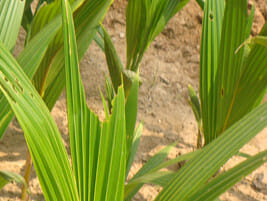
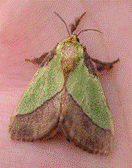
Management
Chemical Method:
Mechanical Method:
Coconut Skipper
Symptoms of damage

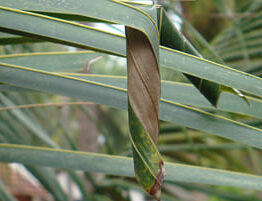
Identification of pest
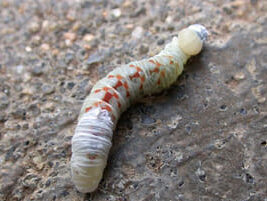
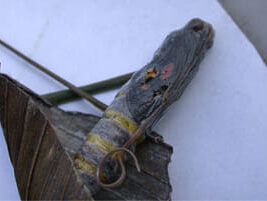
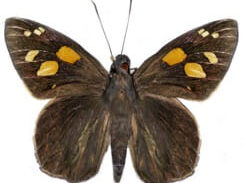
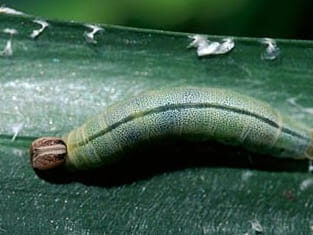
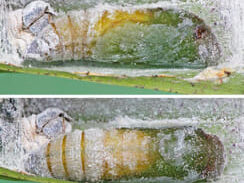
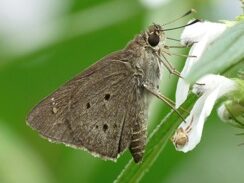
Management
Coreid Bug
Symptoms of damage
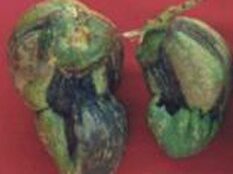
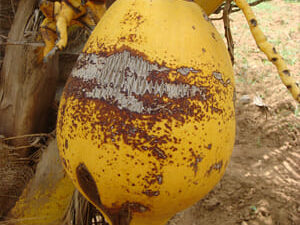
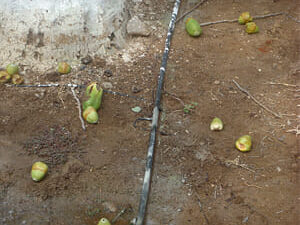
Identification of pest
The adults are brown colored measuring 2 cm in size. The life cycle is completed in a month's time.
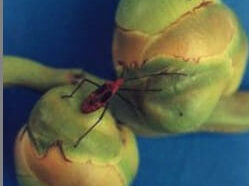

Management
Chemical Method:
Mechanical Method:
Bag Worm
Symptoms of damage
Identification of pest
Larva: Inside the conical bags constructed with silk and thread
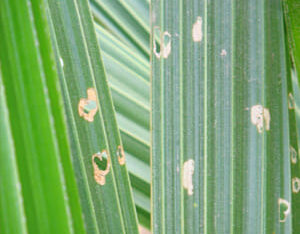
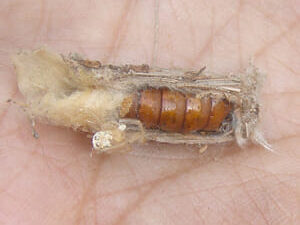

Management
Chemical Method:
Mechanical Method:
White Grub
Symptoms of damage
Identification of pest
Egg: Oval in shape and creamy white in color when freshly laid. Prior to hatching they turn to dirty white.
Grub: Curved, fleshy and wrinkled. They are creamy white in color with brown head.
Adult: Brown coloured beetle with striated wings not covering the abdomen fully


Management
Cultural Method:
Mechanical Method:
Chemical Method:
Physical Method:
Termite
Symptoms of damage
Identification of pest
Adults: Cream coloured, tiny insects resembling ants with dark coloured head


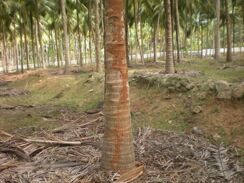
Management
Cultural Method:
Chemical Method:
Lacewing Bug
Symptoms of damage
Identification of pest
Nymph: White with dark patches.
Adults: White coloured adults with netted venation on wing.

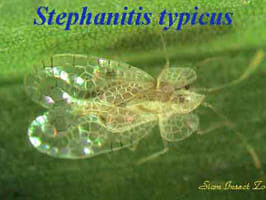

Management
Cultural Method:
Chemical Method:
Scale Insect
Symptoms of damage
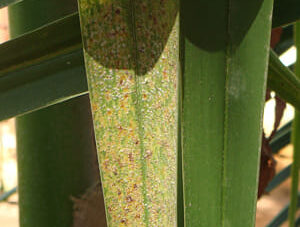
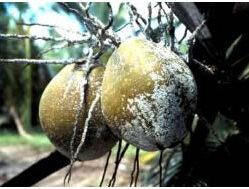

Identification of pest
Egg: hatching the young scales on the undersides of the leaves.
Nymph: Covered with circular waxy secretion
Adult: The scale is bright yellow and round or reddish (female) and oval (male) covered with semitransparent grayish white flat scale. Females are always wingless and remain under their scale their entire life. Adult males have one pair of membranous wings, move about actively in search of females and do not feed during adult stage.
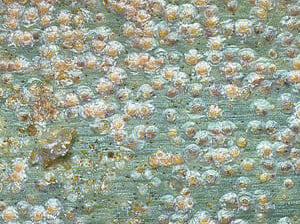

Management
Chemical Method:
Biological Method:
Mealy Bug
Symptoms of damage
Identification of pest
Nymph: Nymphs are flat, oval and yellow. Older nymphs of some species are covered with fluffy, white wax.
Adult: The males are yellowish in color whereas the females are longer and narrow and white in color.

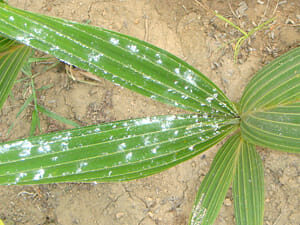

Management
Cultural Method:
Chemical Method:
